Buyers guide: 6 options for calf housing compared
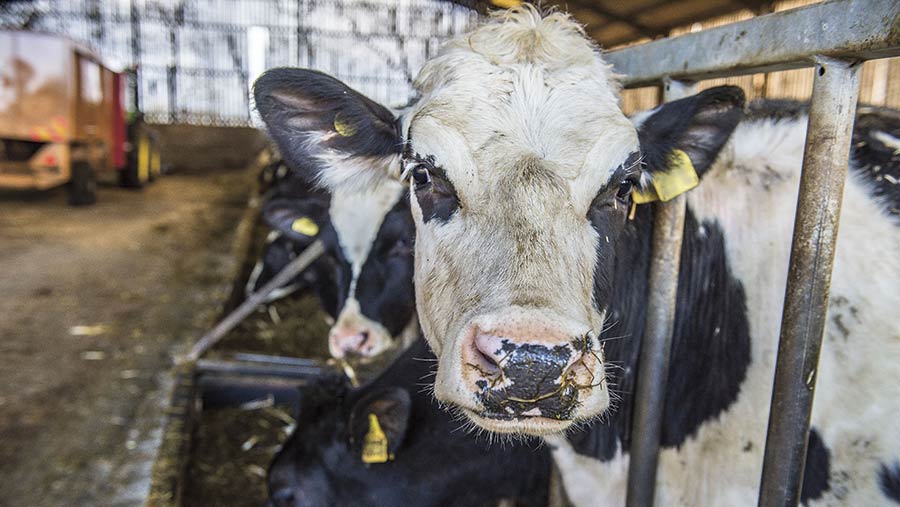 © BillyPix
© BillyPix Investing in calf housing that meets the animals’ needs and dovetails with the farm system can improve productivity and save thousands of pounds in reduced costs and poor performance.
Calves are often housed in less-than-adequate conditions with draughts, cold temperature stress and poor air quality.
Where this is the case the calf will struggle – the cold and draughts can suppress its immune system, while warm, moist conditions in a shared airspace increase the infection risk.
See also: 5 essential ingredients for good calf housing
For example, an airspace which has 50% less fresh air levels can harbour 10 to 20 times the number of pathogens, resulting in poor health and reduced growth rates.
Therefore, investment in good quality calf housing makes sense, according to research consultant Jamie Robertson at Livestock Management Systems.
Older housing
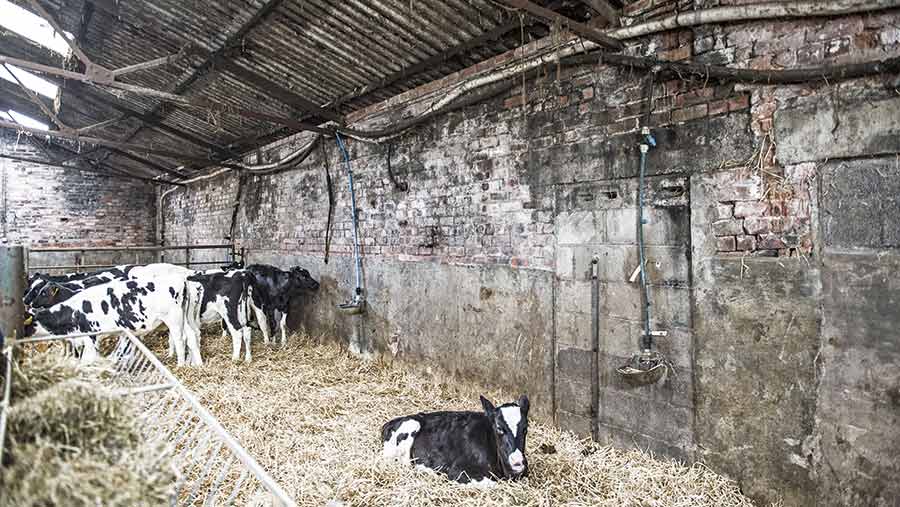 © BillyPix
© BillyPix
Don’t reject older housing just because of its age. Some old buildings can provide ideal accommodation with smaller areas naturally limiting the number of animals sharing one airspace.
They are also more likely to have a steeper roof pitch of as much as 45deg, and this promotes the stack effect, helping to pull air upwards more quickly and out of an open ridge.
Pros
- May promote stack effect
- Size may naturally limit batch sizes, reducing cross-infection
- Little financial outlay
Cons
- Layout may be inflexible
- Ventilation may need improving
- Cleaning and disinfection may be difficult
- Labour requirements can be high
Cost
- Can be incurred in rendering old walls to make cleaning easier
- Adding gutter drains, correcting poor drainage
Roundhouses
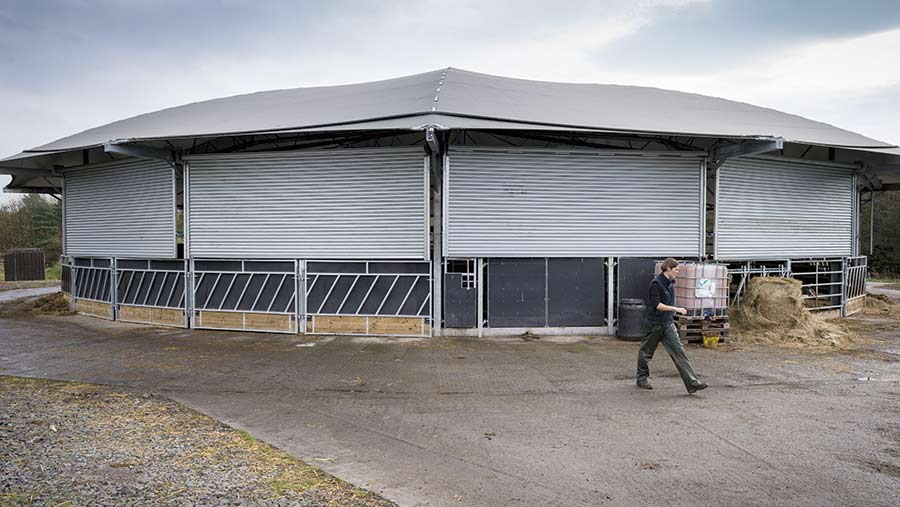
© Jim Varney
A roundhouse is a circular canopy of 22m, 30m or 45m diameter supported by a central pole and steel frame.
The large circular space beneath the canopy surrounds a central handling system and numerous radial pens.
Because there are no corners there is less wind deflection to cause unpredictable air movements and draughts. But while the open sides and opening at the centre pole allow fresh air in and can promote a stack effect, the roundhouse may leave calves exposed to the wind and require barriers to draughts.
Pros
- Probably the best building in terms of environmental conditions for larger cattle
- Draughts can be managed
- Effective stack effect for older cattle
Cons
- A large space may not fit smaller farm systems and age groups
- Large area can be more difficult to clean
- Expensive
Cost
In excess of £100,000
Calf igloos
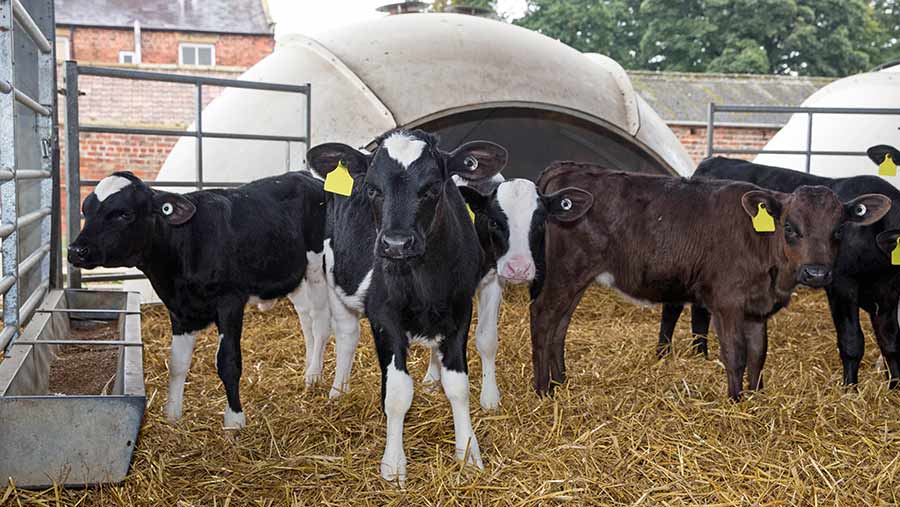
© Tim Scrivener
The robust fibreglass, domed igloo houses between 13-15 calves with a penned, straw area outside the opening.
Typically, they are sited outside an existing roof, facing inwards on either side of a passageway.
The straw areas to the front of the opposing domes are under cover while the igloo itself protrudes out into the open.
Igloo dimensions
- Diameter 4.4m
- Height 2.2m
- Internal floorspace 14sqm
With the closed back of the dome facing into the prevailing wind, airflow up and over the unit draws stale air out of small openings in the top.
The design also provides conditions to create a stack effect when wind speeds drop as the calves can quickly warm the small airspace inside the dome.
The exchange of air volume reduces the chance of pathogen build up.
The relatively small size of the igloo allows the farm to buy a number of units that suit the farm system.
Where they are sited as individual units without the benefit of a larger building covering the straw pen, they are exposed to the elements and may need barriers placed to stop draughts.
Drainage must be checked to ensure the unit is not placed on a site prone to waterlogging.
Pros
- All of the equipment needed to provide a complete system is available from one source
- Provides good air quality
- Unit numbers can be tailored to allow small batches of calves to be established without having to mix age groups
- Thorough cleaning and disinfection can be achieved with fibreglass domes
- Domes can be moved to new sites easily
Cons
- Relatively high capital cost
- Not ideal for more exposed sites because you may struggle to keep wind speeds at reasonable levels on windier sites
Cost
Single Igloo £1,700
Hutches
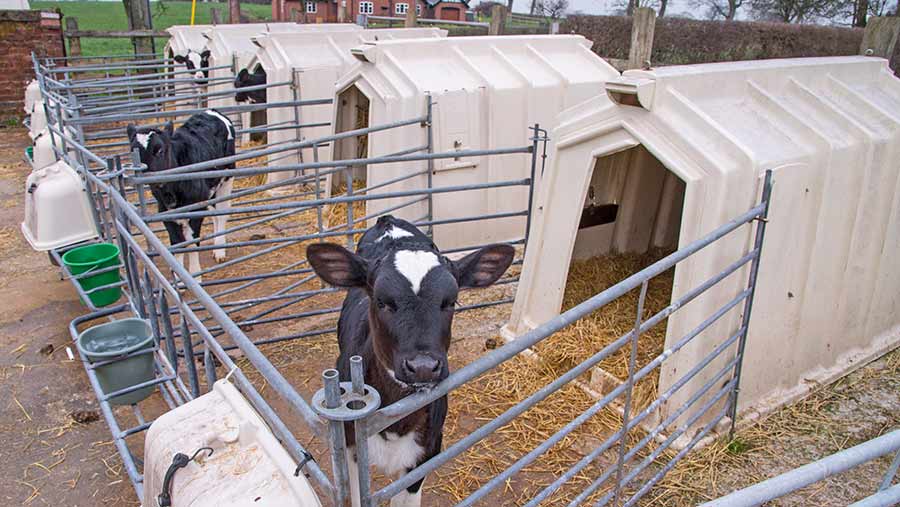
© FLPA/John Eveson/REX/Shutterstock
These can be a cheaper alternative to the igloo, depending on your choice of hutch, and with more manufacturers to choose from, the calf hutch also provides an easy-to-clean housing system.
Hutch dimensions
- Length: 3.4m
- Height 2.2m
- Width: 1.9m
Like the igloo, the hutch can be bought in numbers that match the number of calves produced on a unit.
They offer a useful extension to housing capacity at times when calving is at a peak.
But siting must be well thought through to provide protection from the wind and avoid poorly drained areas.
Pros
- Unit numbers can be tailored to allow small batches of calves to be established without having to mix age groups.
- Provides good air quality
- Thorough cleaning and disinfection can be achieved
- Hutches can be moved to new sites easily
- Variety of sizes to choose from
Cons
- Relatively high labour cost
- Not ideal for more exposed sites
- Drainage detail is important
- Can have high straw cost if outside run not covered.
Cost
Varies from £195 for a single-calf hutch to £1,300 for a single hutch for eight calves
Steel sheds
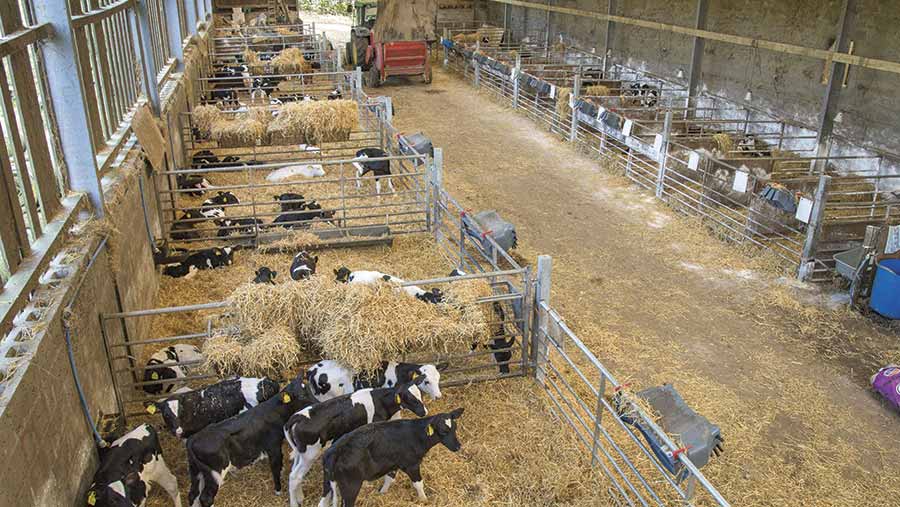
© FLPA/John Eveson/REX/Shutterstock
Steel-framed buildings with concrete flooring, either specifically constructed as calf housing or an existing building conversion, must not be too large for the farm’s system.
Calves up to four weeks of age are temperature-sensitive animals under typical UK winter conditions, so a large expanse may create an airspace that is difficult to manage.
Swirling air movements may produce draughts or cold zones and with large numbers of animals under one roof there is a heightened risk of disease spread.
If sheds are being built it would be better to construct a number of smaller ones. As well as a more manageable airspace the units will be more flexible and easier to clean.
The upside of a steel framed building is the longevity and adaptability of the space which can serve purposes other than calf rearing.
Not ideal for calf use
Pros
- Will last
- Is adaptable and can serve purposes other than calf rearing but this is size-dependent
Cons
- Air movement, hygiene and temperature management are difficult
- Standard, general purpose buildings require additional mechanical ventilation
Cost
Dependent on size
Polytunnels
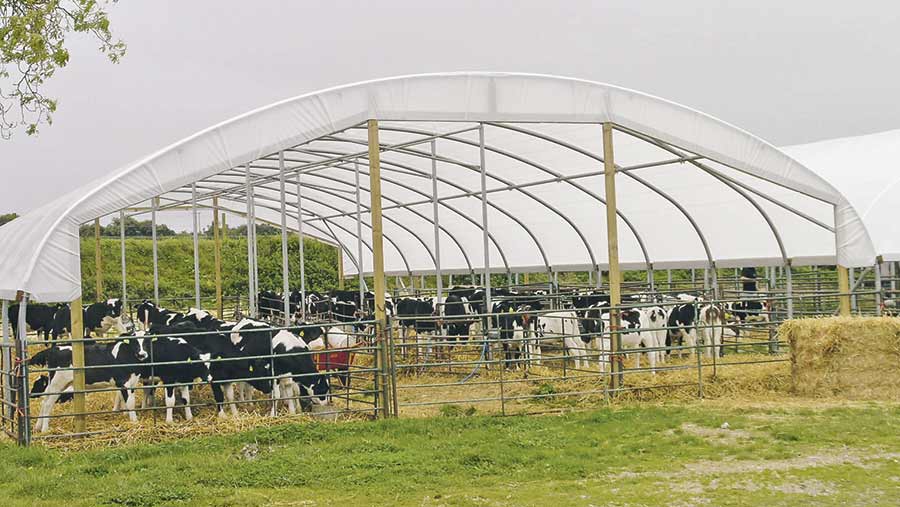
Polytunnel calf houses use an arched steel or aluminium frame covered in heavyweight translucent plastic sheeting to protect rows of straw-bedded pens beneath.
The polytunnel is cheaper and quicker to erect than a conventional steel-framed building and the plastic sheeting allows natural light in, potentially reducing the cost of artificial lighting.
Widths are typically between 10m and 24.5m while lengths can be varied by adding further spans.
The housing is, therefore, extremely flexible but there are notes of caution.
Attention must be given to siting the structure in dry, well-drained areas and to creating a flow of fresh air. Longer polytunnels can suffer from the same inherent disadvantages of large buildings with restricted air movement and the temptation to house larger numbers of calves in one space.
Pros
- More affordable
- Easier to fit basic requirement for housing small, age-related groups
Cons
- Potential disaster if attention to detail on drainage, control of draughts and maintenance of competent air quality is not carried out.
Cost
£8,500-£10,000 for a 10m x 50m polytunnel suitable for calves.
